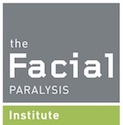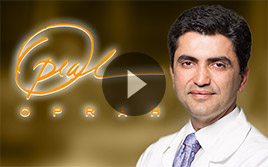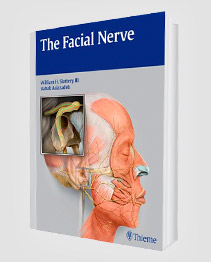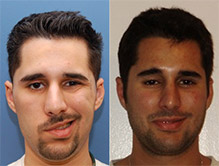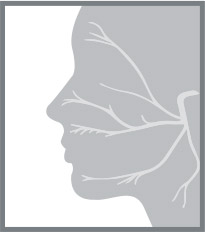When a child’s face suddenly becomes partially paralyzed, parents often feel overwhelmed and desperate for answers. Bell’s palsy affects children differently than adults, and understanding the recovery process can help families navigate this challenging condition with realistic expectations and hope.
Key Takeaways
- Bell’s palsy in children cannot be completely “cured” but most kids recover full facial function naturally
- Recovery typically begins within 2-6 weeks and can take up to 6 months for complete healing
- Early treatment with steroids within the first 72 hours may improve recovery outcomes
- Most children (70-80%) regain full facial strength and expression without permanent effects
- Physical therapy and exercises can support the healing process during recovery
What Is Bell’s Palsy in Children?
Bell’s palsy happens when the facial nerve gets inflamed, leading to unexpected drooping or weakness on one side of a child’s face. It’s relatively rare in kids, affecting about 15 to 40 out of every 100,000 each year, far less often than in adults.
The facial nerve controls muscles responsible for expressions like smiling, frowning, and closing the eyelid. When this nerve becomes inflamed, children experience dramatic changes in their appearance, often developing symptoms overnight.
Common signs parents notice include:
- Inability to close one eye completely
- Drooping mouth corner on the affected side
- Asymmetrical facial expressions when smiling or speaking
- Difficulty eating or drinking from the affected side
https://facialparalysisinstitute.com/conditions/bells-palsy
Can Bell’s Palsy Be Completely Cured?
The honest answer is that Bell’s palsy cannot be “cured” in the traditional sense, but this doesn’t mean children are left without hope. Recovery usually begins two weeks to six months from symptom onset, and the majority of people with Bell’s palsy recover full facial strength and expression.
One hopeful thing about Bell’s palsy in kids is how well their bodies bounce back. A child’s nervous system is still developing, which means it’s incredibly good at healing. In most cases, facial movement starts coming back within a few weeks, and many children go on to recover completely.
The key distinction lies in understanding that while there’s no magic cure that instantly reverses Bell’s palsy, the condition often resolves completely through the body’s natural healing mechanisms.
Recovery Timeline: What to Expect
Understanding the recovery timeline helps families maintain realistic expectations while monitoring their child’s progress.
Typical Recovery Phases:
- First 2 weeks: Symptoms may worsen slightly before improvement begins
- Weeks 3-6: Subtle movements often return first (corner of mouth, eyelid closure)
- Months 2-4: More noticeable improvements in facial symmetry and function
- Months 4-6: Most children achieve full or near-complete recovery
Most symptoms improve within 4 to 6 weeks, and almost all children have at least some recovery by 6 months. Healthcare providers typically monitor progress closely during the first four months.
If significant improvement hasn’t occurred by this point, additional testing may be necessary to rule out other causes and explore alternative treatments.
https://facialparalysisinstitute.com/blog/best-treatments-for-bells-palsy
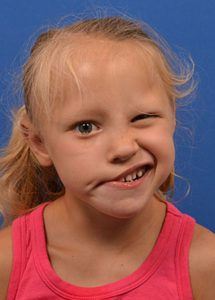
Medical Treatment Options
While Bell’s palsy can’t be cured outright, several medical interventions can significantly improve recovery outcomes when started early.
Primary Treatment Approaches:
Corticosteroids: The most effective treatment involves medications like prednisone, which reduce inflammation around the facial nerve when given within 72 hours of symptom onset.
Antiviral Medications: Treatment with acyclovir or valacyclovir, combined with steroids and initiated within three days, is recommended to reduce recovery time and increase the likelihood of complete healing.
Eye Protection: Since children often can’t close the affected eyelid completely, doctors recommend:
- Lubricating eye drops during the day
- Eye ointments at bedtime
- Taping the eye closed during sleep if necessary
For accurate bell’s palsy diagnosis, healthcare providers conduct thorough neurological examinations and may order imaging studies to rule out other conditions.
Physical Therapy and Exercises
Physical therapy plays an important role in pediatric Bell’s palsy recovery, though the approach differs from adult treatment protocols.
Therapists typically introduce gentle expert-approved facial exercises after the acute inflammatory phase subsides, usually around 2-3 weeks after onset. These exercises for bell’s palsy focus on maintaining muscle tone and preventing contractures.
Kid-Friendly Therapy Activities:
- Blowing bubbles to exercise lip muscles
- Making funny faces in mirrors
- Practicing exaggerated expressions
- Gentle massage techniques parents can learn
Children often respond better to therapy activities that feel like games rather than medical treatments. The rehabilitation approach emphasizes family involvement, since consistent practice at home often determines long-term outcomes.
Long-Term Outcomes and Prognosis
Most children with Bell’s palsy experience excellent long-term outcomes. Most kids with Bell’s palsy get completely better within a few weeks, though rarely some may continue to have some weakness in their face.
Recovery Statistics:
- 70-80% achieve complete recovery
- 15-20% have minor residual weakness
- Less than 5% experience significant long-term effects
When a child’s facial movement doesn’t fully return within the usual recovery window, more specialized care might be needed. In cases where paralysis becomes long-term, options like muscle transfers or nerve grafts may help bring back function, but these are typically explored only after other approaches haven’t worked.
Comprehensive bell’s palsy management addresses both physical and emotional aspects of recovery, including counseling support for children who feel self-conscious about their appearance.
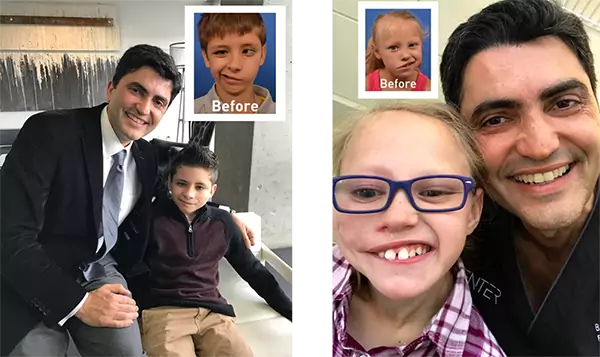
When to Consider Advanced Treatment
While most children recover naturally, certain situations warrant specialized care. Families should consider consulting specialists when:
- Recovery stalls after four months
- Children experience recurring episodes
- Significant functional limitations persist despite treatment
- Complications develop during recovery
The best bell’s palsy treatment for children often involves multidisciplinary teams including neurologists, plastic surgeons, physical therapists, and psychologists working together.
Modern bell’s palsy treatment options continue evolving, with research focusing on improving outcomes for pediatric patients who don’t respond to conventional therapies.
Supporting Your Child Through Recovery
Recovery extends beyond medical treatment to include emotional and practical support that helps children maintain confidence during healing.
Essential Support Strategies:
- Maintain normal routines while accommodating temporary limitations
- Communicate with schools to help teachers and classmates understand the condition
- Connect with support groups for families navigating similar experiences
- Celebrate small improvements to maintain motivation and hope
Most children can participate in regular school and recreational activities, though certain modifications may be necessary to protect the affected eye or accommodate limitations.
Family support groups and online communities provide valuable resources for connecting with other families who’ve navigated similar experiences.
Taking the Next Step
If your child is experiencing Bell’s palsy symptoms, don’t wait to seek professional evaluation and treatment. Early intervention significantly improves outcomes and reduces recovery time. Get specialized pediatric care from experts who understand the unique aspects of childhood facial paralysis.
Conclusion
Bell’s palsy in children cannot be cured in the traditional sense, but the vast majority of young patients achieve complete recovery through natural healing processes supported by appropriate medical care.
The prognosis for pediatric Bell’s palsy remains overwhelmingly positive, with most children regaining full facial function within six months of onset. Understanding the recovery timeline helps families maintain realistic expectations while providing the support and patience necessary for optimal healing.
While the initial diagnosis may feel frightening, parents can take comfort knowing that their child’s developing nervous system has remarkable capacity for recovery and that effective treatments exist to support the healing process.
Request your consultation with Dr. Azizzadeh today
Call us at (310) 657-2203 to schedule an appointment.
Schedule a Consultation